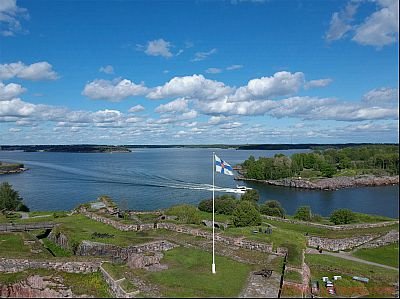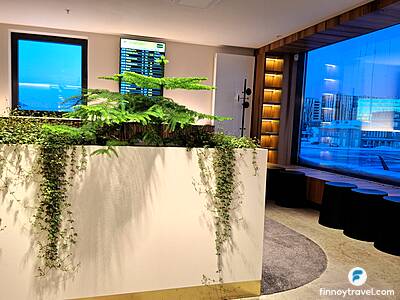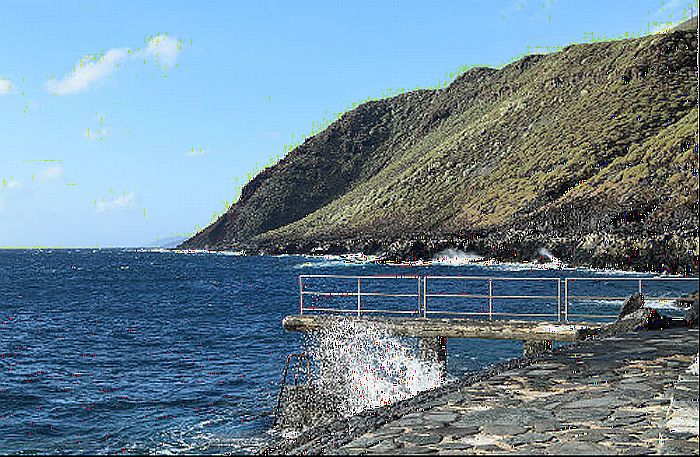FINLAND: From A Filipino Immigrant's Perspective
Disclosure: The content on this page includes affiliate links. While clicking on these links won’t cost you anything extra, we may earn a modest commission from any purchases.

Being an ex-pat in Finland is an eye-opening experience. However, the change is significant because of a different culture from a tropical country. It takes time to adapt to the Finnish lifestyle. Read how our Filipino contributor felt about his move from the warm and crowded country to the peaceful North. In the article, he describes the differences between Finnish and Filipino culture and his experiences with Finnish life.
Covered in the Article
It has been over two years since I moved to Finland from the Philippines. As an Asian immigrant, I have seen many differences in living a new life abroad. Therefore, I decided to write this article reflecting on this two-year milestone based on my experiences over the last 130 weeks. Firstly, I thank you for taking the time to read my blog and I hope it is useful for someone intending to visit or perhaps considering moving here.
It is still vivid in my memory since I was in elementary grade when I learned about Finland for the first time. It’s clear in my mind the first Nokia phone I had ever used (it was my uncle's) was made in Finland. Since then I have too curious about how useful the letters ä and ö in this mobile phone’s keyboard could be. I realize from history books that this beautiful country belongs to the European continent which I am impressed is a beautiful destination. Ever since I just dreamed that someday I could visit not necessarily Finland but somewhere in the European countries. It was not until June 2013 that I learned about the Finnish healthcare company Attendo coming to our home city and hiring nurses. My dream goal of landing in Europe seemed to be coming into reality as soon as I submitted my application. Going forward, luckily I was able to hurdle the challenging application procedures. Finally, we had to take the intensive Basic Finnish Language Training that lasted for almost 6 months conducted by two great Finnish language teachers. It was early in May 2014 when our flight to Finland was confirmed by this esteemed company and so a month later, summer of 2014 we finally arrived here in Finland.
How an Expat in Finland Feel Finnish People?
Being in a new environment would bring a sort of excitement. They could be shocking or somewhat awful especially if norms are different in the society you get used to. Whatever these surprising differences, they will help you grow every single day. Along my two-year journey in Finnish society, I have learned slowly how Finnish people are.
Finns are not going to become your best friends overnight, there is much trust and patience involved. You can’t normally say greetings to strangers you meet around. This would be acceptable only if you are playing the role of a customer say paying your purchases at the cashier, you may say Moi! Hei (Hello!) and expect the staff to do the same. Smiling towards them whom you meet randomly in the streets may sound weird to Finns. A big difference in our culture where we happily greet new people even with big smiles. This is especially true for Filipinos working or visiting abroad and saying greetings to fellow Filipinos as if we have met or known each other before.
In my early stay here, I immediately noticed that Finns are silent and shy people. It may sound puzzling to a newbie ex-pat in Finland or to a tourist when one local prefers standing rather than sitting next to you on an almost empty bench at the metro station or standing at the other side of the bus stop while waiting for a bus. An approaching local may prefer standing even if his destination is a few train stops rather than sitting just next to you inside a means of public transport. In the lunch cafeteria, you will notice he may sit at the end of the table. This I have asked directly from Finnish workmates and friends during our actual journey by bus. They said, ¨To Finns, Personal space is highly important and we will usually feel uncomfortable or suspicious if others are too close¨. This implies a message that the ones they let get closer must be somehow special. So congratulate yourself if you’re lucky enough to be allowed to Finn’s zone, you ought to feel at least a bit proud. More than that, you must be luckier if you can take a selfie with a willing Finn because in my observations they are even shyer towards the camera’s lens. To most Filipinos, taking photos is the very normal way to record quality moments with friends, family and loved ones.
Finns are helpful and collaborative. As you befriend a Finn you would expect them to be part of your family. They would offer any form of help as much as they can. Since the beginning of our early immersion at the workplace, our Finnish workmates and employers always have shown us support verbally and morally with the common goal of enhancing their Filipino workmates' Finnish language skills. Simultaneously they always made us feel very welcomed as members of the working team exemplifying the concept of 'yhteistyö'(collaborative work), a working principle that makes Finland one the best countries in the world. During the time we had to move to another apartment, one workmate voluntarily helped in making the application for the new apartment. In Finland, there is competition among potential tenants of apartments for rent, usually, it would be quite difficult for foreigners to be prioritized. Luckily with our workmate’s help whom we sometimes addressed as ‘Suomalainen äiti’ (Finnish mother), we finally got this new apartment. Help was poured more when another workmate upon learning about our transfer to a new place immediately offered help with the transport of our things, especially furniture. One good friend also has done the same, utilizing their cars, our things got to our new home. I have learned also that every colleague at the workplace is counted as a family member, they offer surprises for every milestone event in a workmate’s life (weddings, birthdays, getting a new child, etc.) Support is most visible of course in times of hardship in the case of the death of a family member. However one of the most memorable and surprising events was when our workmates organized a graduation party for three of us Filipinos. Aside from their unsolicited support throughout our schooling days, that paved our way to graduate as lähihoitaja.
I have learned in my workplace how Finns put high regard to punctuality. It is very impolite to come late to work or to a meeting but of course, it is understandable on emergency occasions. Only that you are expected to call and inform us in advance about not making it in time or not at all. I’m thankful for being able to adapt to a good work ethic which I carry out on all occasions. Meanwhile in the Philippines, tardiness and starting things late have always been part of our culture. So much so that this undeniably big problem was even given a brand called Filipino Time, a phrase first coined by Americans in the 1900s because they were irritated by the lack of punctuality of Filipinos. This huge problem is attributed to the country’s horrible traffic and poor public transportation, and sadly our acceptance of Filipino Time as a brand. It is nearly impossible to eradicate tardiness from our culture and society rooted in our culture and literature. We cannot blame why we are always late simply on Filipino Time and must strive to eradicate our tardiness as a brand for us Filipinos. We should acknowledge that it is usually because of our lack of discipline and lack of respect for other people’s time. These two bad habits are eradicable by making changes in ourselves. Again I’m thankful to have the opportunity to live in Finnish society where I have learned seriously about punctuality.
The same customary value applies when attending parties or visiting one’s place, never going uninvited is a basic rule in Finnish culture. In contrast to ours in the Philippines, it is appreciated regardless you have not informed the host/s beforehand about your visit, the host person/family even thank gratefully the guest for a good surprise visit.
Finns are very honest people. In an article published by Business Insider (September 24, 2013) Reader’s Digest has made an experiment dropping wallets in 19 different cities and found out that in the capital city of the country, Helsinki 11 out of 12 dropped wallets were returned. Before I and my Filipino friends had a short walk and we ended up at a thrift shop called Kontti. It had been about 10 minutes since we stepped into this Finnish Red Cross-manned charitable shop when I noticed my wallet was missing. In it were all my important personal identification cards including ATM cards. Initially losing my resident permit card was my biggest worry. We just arrived 2 months ago. It would be complicated to reapply for a new one, firstly because of poor Finnish language skills and not having any extra funds for the application fee was hugely disturbing my mind. Fortunately, about 5 minutes later an unknown mobile number was calling. In the other line was a very calm, friendly voice of a woman with an almost perfect English accent. It was a big relief even without hearing any details yet why she was calling me. By surprise, she asked me where I could meet her so that she could return my wallet. My friends were also puzzled when I swiftly left the portals hurriedly while on the phone. Finally, I met that very goodhearted woman waiting in front of a movie theatre about 150 meters from our location. She happily handed me my wallet and said that she found it along the street, the same pathway we walked earlier. Without any hesitance, I held her right hand very firmly with both of my hands saying confidently with my in-eloquent Finnish accent ‘Kiitos paljon, Colette tosi ihana ihminen!’ (Thank you very much you are a great person!). I took some paper bills and handed them to her for her kindness and honesty but immediately this mother of a one-year-old baby lying in a stroller next to her refused to take them. She smilingly said, ¨' No thanks, We’ve got to go and have a nice evening!¨ That moment gave me a great impression that Finns are very honest people. I have few times witnessed inside buses local people returning lost and found mobile phones from the seats of the previous passenger to the driver, which bus drivers would bring to Suomen löytötavarapalvelu, Finland’s Found Property Service. If you happen to lose any items/s inside public transport, it is advisable to contact the office at the earliest after 4 p.m. on the day following the loss of your item. You can contact the office by phone or fax, or by filling in an inquiry form online. The office however charges a fee for the lost and found items.
Finns love much nature. So much! One would inevitably notice up in the sky before landing in this northernmost European country its dense forests and many lakes. Finland is Europe’s most forested country and the greenest country in the world as cited by the Environmental Performance Index (EPI) 2016. About 70% of the land is covered with trees. Most forests are coniferous. But this is not magic as every generation of Finns makes sure they protect this country’s rich flora and fauna. For example, driving in this country requires you to watch out for elk, deer and reindeer along the road. If you see any of these animals, reduce your speed and, if necessary, stop the vehicle. Sounding the horn is not likely to have any effect. If you collide with any of these animals, you are obliged to notify the police. That is how they respect the lives of animals. By the way, Finns love dogs almost every household has this pet and usually not just one but more and they are of different breeds. There is high respect for animals' rights here.
The Finnish government had long played a leading role in forestry, regulating tree cutting and establishing long-term plans to ensure that the country's forests would continue to supply the wood-processing industries. Forests played a key role in the country's economy, making it one of the world's leading producers of wood and paper products. So next time you are printing your document, it's most probable you are using paper products produced in Finland. It’s quite sad though that while the Philippines is a tropical country, the very hot temperature is a perennial problem resulting mainly from forest degradation due to the massive irresponsible cutting of trees. Many greedy politicians don’t prioritize environmental protection instead their commercialization projects and often meant for their benefits to exceed the best interest of nature. Not surprisingly then my densely populated home country is suffering from the direct effects of continuous global climate change. Extreme weather conditions lead to a big loss of agricultural products Landslides and polluted air because of rampant illegal cutting of trees etc. On the contrary, Finland takes seriously Mother Nature’s protection. The report of EPI indicates that Finland has actionable goals and measurable indicators of sustainable development. Finland performed very well in the areas of health impacts, water and sanitation, and biodiversity and habitat. You would notice that in all department stores, they have collection points for plastic bottles of soft drinks and beer cans. In Finland, 9 out of 10 plastic bottles are returned for recycling and almost 100% of glass bottles are also recycled. You might also be surprised that every plastic bag you request from the cashier while paying for your purchase of grocery items will be charged a few euro cents. Thanks to their strict waste management rules that lead its people to practice the concept of recycling and proper waste segregation. Hence diminishing the number of daily waste in every household. As a result, they enjoy clean rivers, lakes and underwater reserves. Finland is known for easy access to clean drinking water. The cold temperature water from any faucet, even in the comfort rooms, is safe to drink. So if you happen to come here, you will be lucky enough to breathe in freely this country’s high-quality air, ranked as the third cleanest in the world by the World Health Organization (WHO) in 2016.
Finns love the sauna. One indisputable part of the Finnish culture is the traditional Finnish sauna. Historically saunas have been a major part of Finn's life from birth to death. Women give birth in the sauna because it's considered the cleanest room in the house. Saunas were also the place for purification rituals before marriage. The bodies of the dead were washed and prepared for burial on the wooden benches. These however are no longer practised in modern times. Instead, the sauna nowadays is mainly used for Finn's well-being. They regard the sauna as a place for relaxation, a sacred place. It is therefore no malice to be naked while entering the sauna room. No clothes or swimsuits are allowed, for the same reason that you would not wear anything in the bath or shower as every part of the body needs to be properly cleaned. This may be difficult for foreigners to comply but some locals but not all will say straight for non-compliant individuals with the clear signs ‘No underwear please’. Of course, there are separate areas for each gender unless they are members of the same family. Admittedly it is difficult for Asians like me coming from a quite conservative cultural background where being naked in public is not tolerable. The first time, it was undeniably very uncomfortable for me. Inviting my Filipino friends together for a sauna would impose a problem, for the same reason, being uncomfortable being naked in public. However, I have learned gradually to adhere in respect to this Finnish etiquette.
A traditional Finnish sauna may be too hot for you for the first time as temperature may vary from 70-130 C but as you sit on the lower benches, the temperature gets lower too. Electric saunas are common nowadays in private residences and public saunas. But my favourite is the two wood-burning and three smoke saunas in summer cottages because the steam is very soft and moist. If you happen to sit next to the pail of water, please mind throwing water into the stones and refilling it as you leave as an act of courtesy to the rest of the people in the room. You might now wonder that my statements above about Finns being shy and silent are not true inside the sauna. It has been surprising that some random people in the sauna room tried to initiate a conversation with me initially speaking in English and where I come from. It is common for Finns to be chatty inside this steamy room, telling even their own life stories. A Finnish movie entitled Miesten Vuoro will explain much about this claim. Each of the main characters narrated dramatically their own life stories to each other. They may talk about current issues but if you speak, you should not discuss your job, title or religion. Having lived here for more than two years I have slowly adapted to frequenting the sauna room at the public swimming halls usually 2-3x a week. For me, it is an effective way of renewing myself after a long day at work. I always feel relaxed after each sauna session. In addition to this, sauna has many health benefits proven by Finnish research suggesting that sauna can help lower the risk of developing dementia and Alzheimer’s disease as well as dying of heart ailments. (Please check our link about the sauna) So if you want to experience how to be a Finn, do what people love here to do, be confident and visit the sauna during your stay in Finland!
Language
In Finland there are two official languages, Finnish and Swedish of which only a small portion, 5% of the total population are Swedish-speaking Finns. If you come for a visit and you speak English, you should not have any worries as most Finns speak fluently or at least almost all locals understand English. Coming here for work, however, requires Finnish language skills to be able to survive long-term. Most employers require Finnish language skills unless you are working in an atmosphere of international companies whereas other languages are the medium of communication. Working in Finland means a need to study Finnish. Many government-funded organizations are offering free language courses for immigrants. It’s still memorable for me the first 6 months of integrating into Finnish society knowing little of the Finnish language. We had five months of Finnish language training in my home country before coming here. I realized at first that knowing written Finnish is not enough if you converse with native Finns as they have spoken language too, which I am pretty sure for all beginners is not just quite difficult to comprehend. Words must be pronounced properly otherwise you could be misunderstood. One classic example is Minä tapan sinut ( I’ll kill you) vs. Minä tapaan sinut ( I’ll meet you) and many similar words appear almost the same but have different meanings. But don’t worry as you go along, each day you will see yourself improving bit by bit (pikkuhiljaa as Finns call it). One good Finnish friend always imparted to me, Finns will understand you, so don’t mind if you know you speak in quite wrong grammar. Finnish colleagues always encouraged us to speak in Finnish (even to fellow Filipinos in Finland or immigrant workmates at the workplace) because they just wanted us to learn the Finnish language. I agree so far, practice makes perfect, oh in this context …I rather say, better. In my opinion, it takes many decades before one can finally master this one among the world’s most difficult languages! (unless you are from Estonia whose language is almost similar to Finnish). I may have sounded a little bitter here about the Finnish language. But one thing is for sure: As it requires continuous practice to learn it faster, just learn to love the language first and you’ll see yourself improving each time. Nothing is impossible.
Seasons And Best Time To Visit Finland?
There are four distinctly different seasons in Finland. If you have a choice of when to visit, the best time will depend on the sort of activities you are most interested in doing and which regions you want to visit.
Winter

There are quite variations depending on which part of the country you are staying in. The snow season in Lapland, the northern region of the country begins in November and lasts at least until May. I have been there last November and I’ve learned that this is regarded as Finland’s winter wonderland. You can feel the magical spirit of Christmas here all year round. Santa Claus village located in Rovaniemi, the capital city of Lapland is a must-see. Here I had the opportunity to meet the real Santa Claus, and don’t worry if you can’t speak Finnish because he can communicate in English well. If you feel more energetic, you may enjoy thrilling activities such as snowmobiling, husky dog sledging and reindeer rides. A newly opened snow bar in the same spot will give you a new winter experience. Also, Lapland is the best region to have a chance to see the Northern Lights more known as the Aurora Borealis. Clear, nights are ideal for spotting the Northern Lights. There are available Apps like Aurora Forecast that are pretty accurate in predicting when and where this magical sky show is visible. Because of the abundant amount of snow and varying terrains in this region, Lapland is most famous as a skiing and snowboarding destination.
In Central and Southern Finland, the first snowfalls at the beginning of December and melts during late March and April. Winter temperatures may drop as low as -41C in Lapland (coldest temperatures recorded, Jan. 5, 2017), while in Lakeland (Eastern Finland) and the Western Lakes, the temperatures range between -5C and -20C. Southern Finland and coastal areas stay warmer and get less snow due to the warming effect of the Baltic Sea. Regardless of the weather outside, Finnish holiday cabins remain warm because they have full central heating, additional underfloor heating, a wood-burning fireplace and of course a sauna for added warmth! Generally, the invigorating winter days entice you to admire the beautiful frozen trees and lakes in any part of the country. Additionally, ice fishing, ice skating and swimming in frozen lakes are also popular activities during the winter.
Coming from a tropical country, one of the biggest struggles is surviving each day of the winter season. Inside buildings though there aren’t problems as they are well heated. Winters in Finland are at their darkest at the end of December, when the Northern region gets about 0 hours of daylight, while the Southern region gets about 6 hours of daylight. Fortunately, when there is much white snow, it reflects the available daylight very efficiently making the outside environment brighter. However, concerning these dark months, it is highly recommended to wear reflectors for your safety as car drivers may not notice you or approaching bus drivers for example won’t easily see you at a distance. More importantly, wear enough warm clothes while outside as the temperature can be nerve-penetrating! Don't be surprised though if you notice Finns seemingly are not feeling cold at all. They would wear thick clothes and winter accessories usually if the thermometer reading drops -20C :) Finns may have adapted to the cold temperatures and this is one unique thing about them:)
Seasonal Affective Disorder (SAD) may afflict anyone during this gloomy season. I for one honestly have once experienced during my first winter here a sudden serious change in my mood related to the transition of autumn to winter. Additionally, one may exhibit any of the associated symptoms, such as feelings of hopelessness and worthlessness, loss of interest in hobbies/activities, difficulty with concentration and decisions, social withdrawal, appetite and sleep problems, a lack of energy or agitation, decreased sex drive and in worse cases, suicidal thoughts. One must seek professional advice from doctors if you have noticed any of the above symptoms. These prevention methods may help combat the onset of SAD https://www.prevention.com/mind-body/effective-solutions-seasonal-affective-disordera.
Spring
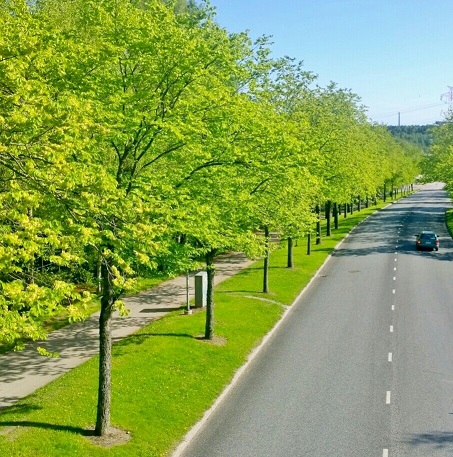
It’s great to welcome the springtime sun in April while nature blossoms all around. The daytime lengthens rapidly and becomes warmer. Besides Lapland temperatures in the whole country will begin to rise at the end of April to above zero degrees. The spring is a wonderful time to roam and witness the revival of nature from its slumber. It’s great to enjoy biking around and you will start to see budding leaves in trees and flowers and enjoy a walk through the pristine forests and fields. Hiking particularly is a popular activity at this time of year as the air is fresh and temperatures are moderate. The Spring season lasts until May.
Summer
I arrived here at the early start of the summer of 2014, at first I wondered why it is raining when it is summer but then I learned it is just normal for Finnish summer to be at times rainy. In temperate countries like the Philippines, it is always sunny and dry during summer. Each year the Finnish summer varies, Finns will call it ‘hyvä kesä (good summer) when it is warm enough throughout the summer season ending in August. Temperatures tend to stay around +15C-+25C. The summer is the season of the Midnight Sun whereas nights are bright. In Lapland, for two months from June to July, the sun never sets! The reason why Finland is called the land of the midnight sun. Elsewhere in the country, the sun disappears below the horizon only for a few hours.
Finns love the sun, you can see them sunbathing in any open areas possible lying down beside beaches and getting an extra dose of vitamin D. And so it is unacceptable to use an umbrella to cover yourself from the sun (as it is only meant for a rainy reason, again in tropical countries it is advisable to use an umbrella to protect yourself from the strong rays of the sun), here they may think you are crazy .
There are plenty of events during summer. Perhaps one of the most popular is the celebration of Midsummer Eve. This tradition happens on the first Saturday after June 19. It is a weekend of barbecuing, swimming, drinking, storytelling, singing, and dancing. Last year in Helsinki, I spent Midsummer with locals on Seurasaari, a forested island with an outdoor museum of historic buildings. Here you find old-fashioned craftsmen, customary games like puukävely, musicians playing the kantele (the harp-like national instrument), pancakes and burnt sausages. For the finale, they light a huge bonfire and a newlywed couple is rowed around in an old wooden boat.

In July when days and nights are even warmer and brighter I usually spend swimming with friends in the freshwater lakes. One of my favourites is Saksijärvi situated in Nurmijärvi, 46 km northwest of Helsinki. According to a study, it's one of the cleanest lakes in Finland with white sands perfect for sunbathing, a claim which I strongly attest to having visited there quite often.
Cabin holidays in summer are highly popular in Finland. Many Finns escape to the countryside to spend their summer vacation relaxing with loved ones by the shore of a cool, clean and rejuvenating lake. It’s excellent to retreat to lakeside cottages (kesämökki). Boating, canoeing, fishing, barbecuing, swimming and the inevitable traditional Finnish sauna are just perfect ways to spend summer with friends and families while unwinding at the lake. I used to have late-night barbecues with friends by the lake while watching the beautiful sunset reflecting the scenic view of Finnish nature. A few months from now I am again excited to revisit these lakes away from the hustle and bustle life of the city.
Summer season is also a popular time to do berry picking in the forest, an old Finnish tradition among families. In July I with good friends usually enjoyed harvesting newly appeared wild blueberries, bilberries, cloudberries, raspberries, lingonberries, and mushrooms, which all make a large part of a Finnish diet. Finland has universal rights which allow everyone to move freely around the countryside, pick berries and mushrooms and fish with a rod and line, without permits (the former I’m yet to try). Any profits made from the sale of this natural product are exempted from tax.
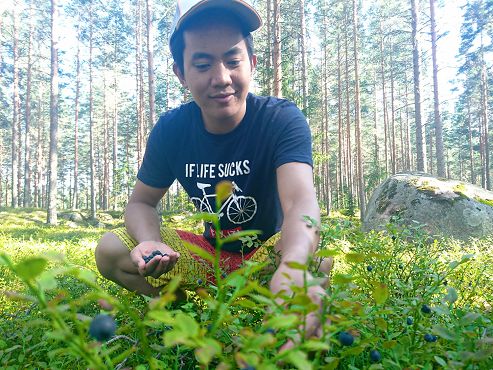
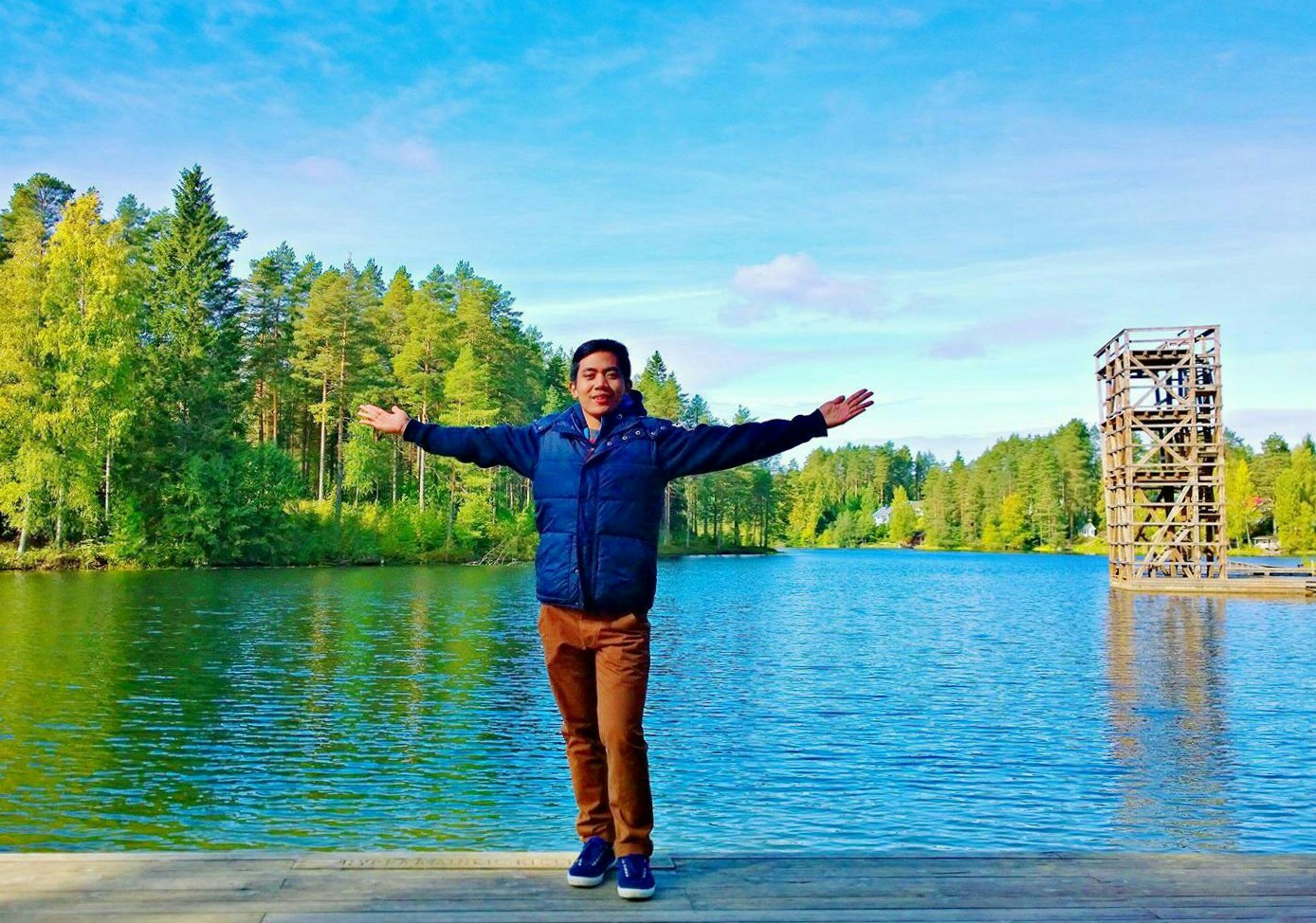
Autumn
Next to summer, autumn is my second favourite season when the leaves of different varieties of trees begin to turn gold, orange and red in September. Autumn begins about one month earlier in Northern Finland compared to other parts of the country. This is termed by Finns as "ruska" when these changes of colour leaves create a colourful spectacle covering almost Finland’s forest landscape. You can appreciate more the splendid Finnish nature as you travel more North because there are more pristine forests and fewer villages and towns. The weather in the autumn season is difficult to predict as it varies a lot every year, and even from day to day. However one thing holds always true, this is the season when it rains the most. Autumn brings also darkening days and cooling weather when nature starts preparing for a new snowfall in the forthcoming winter. In autumn the daily mean temperature remains below 10°C. Though it is no stranger to sunnier times either. The moderate temperatures of autumn make this season ideal for exploring the many woodland trails on foot or cycling. You may still have the chance to pick berries and mushrooms in the forests but expect they are scantily available this time.
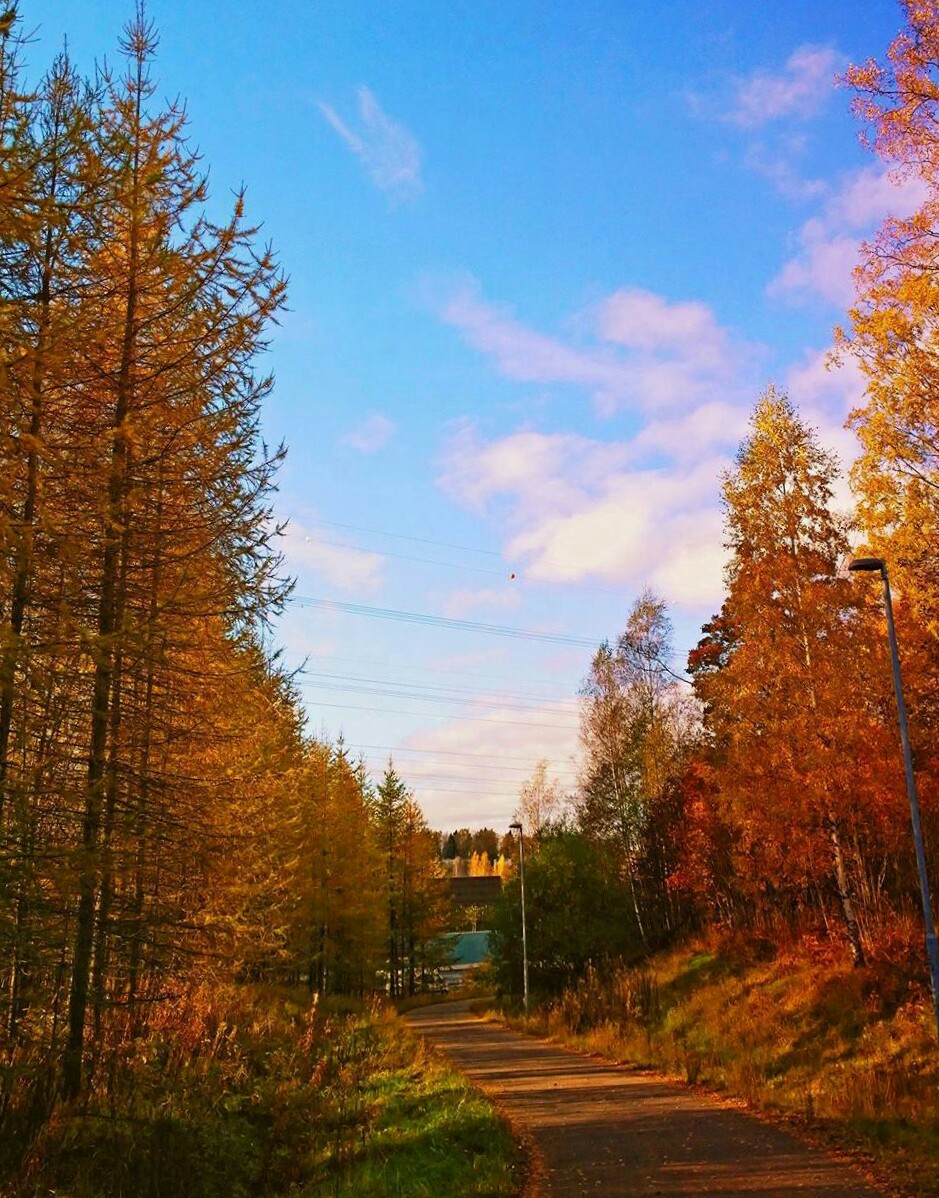
So from the North to the south and east and west part of Finland, you will surely enjoy your stay wherever you are as each place offers various activities and sightseeing unique from each other. Finland has a very good transport system. Travelling via public transport is easy in Finland and it is known to be reliable and safe. We have published an article about public transport, you can check it here.
That’s all for now. Thank your time reading and I hope this blog will help you with how to maximize your visit/stay for being new in Finland. In the following series of my blog I would like to discuss my explorations in Finland so please stay tuned to our page.
Got interested in Finland? See our article about practical Finnish immigration options.

